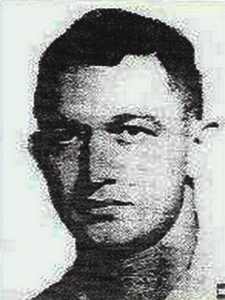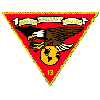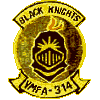| |
|
|
|
Robert Duane Kent
Captain
VMFA-314, MAG-13, 1ST MAW, III MAF United States Marine Corps Dallas, Texas December 06, 1940 to June 24, 1974 (Incident Date December 20, 1968) ROBERT D KENT is on the Wall at Panel W36, Line 52 See the full profile or name rubbing for Robert Kent |
  |

|



| |
|
A Vietnam Veteran myself, I've not met Captain Robert Kent but I have worn a POW-MIA Bracelet bearing his name since 1972, and I had always wondered about this man. I decided to do a Memorial Web Site to honor him. (Site no longer available). I would like to include a poem here as a token of my appreciation in memory of Captain Robert Duane Kent and all the many other servicemen who have made the supreme sacrifice and given their lives for our country, so as to allow us the privilege of freedom we now have.
John Gordoski , one who wears his MIA bracelet. |
|
The McDonnell Douglas F-4 Phantom II was a tandem two-seat, twin-engine, all-weather, long-range supersonic jet interceptor and fighter-bomber originally developed for the United States Navy by McDonnell Aircraft. The Air Force, Marine and Navy used the F-4, in addition to interceptor and fighter, in other roles including photo/electronic surveillance, and reconnaissance. The two man aircraft was extremely fast (Mach 2.2) and had a long range, 900 - 2300 miles depending on weapons and mission. The F4 was also extremely maneuverable and handled well at low and high altitudes. It was used extensively in the Vietnam War. On 20 December 1968 Captain Robert D "Bobbie" Kent, pilot, and then 1st Lt. Richard G. Morin, bombardier/navigator, comprised the crew of an F4B that departed their base on a night bombing mission to interdict enemy movement through the jungle covered mountains approximately 11 miles southwest of Muang Xepon, 7 miles northeast of Muang Phin and 25 miles west of the Lao/South Vietnamese border in an area of the infamous Ho Chi Minh Trail. This border road or trail was used by the Communists to transport weapons, supplies and troops from North Vietnam into South Vietnam, and was frequently no more than a path cut through the jungle covered mountains. Captian Kent and his wingman arrived on station at approximately 02:00. An airborne Forward Air Controller (FAC) was controlling the strike in an area that had been targeted numerous times in the past. The FAC marked the target with a burning flare and Bob rolled in around 03:40 hours to drop his 500 pound bombs. The FAC observed what he thought was a huge secondary explosion and Bob's wingman was instructed to drop his similar load on the site of what appeared to be the secondary explosion. Only in retrospect has it been concluded that what was presumed to be a secondary explosion at the time must have been the crash of the lead aircraft. Search and rescue (SAR) efforts were initiated at first light, but the team heard no emergency radio beepers, saw no parachutes and found no trace of the aircraft or its crew. During daylight hours on December 24th, Bob's wingman on the December 20th strike and the squadron Commanding Officer made two flights to search the target area which was protected by anti-aircraft guns. Thus the search was conducted at an altitude of 3000 feet, but there was no sight of the wreckage or parachutes. There were further extensive search and rescue efforts, but they were inconclusive. Both Bob Kent and Richard Morin were initially listed Missing in Action. Lieutenant Morin was promoted posthumously to Captain. After the war ended, family members of the crew of the missing F4B fighter/bomber who questioned the Marine Corps about the fate of their missing loved ones were told that "the aircraft probably exploded in mid-air and there would be nothing to find." There was no additional information about the fate of Bob Kent and Richard Morin until 24 July 1992 when Capt. Kent's cousin reviewed his casualty file during an annual meeting of family members in Washington, DC. When she opened the cover of his records, she found Bob Kent's military ID card, his Geneva Convention card and his drivers license inside a 3"x4" manila photo envelope. Each one of these pieces of personal identification, which were carried by Bob Kent in his flight suit during that last mission, was in perfect, undamaged condition. When asked, "When were these documents returned?" "By whom and under what circumstances?" "How, when and by whom were they placed in his records?" and "Why was the family not notified when they were returned?" The Marine Corps had no answers. To date they still have no answers. Robert was survived by his wife, Jacqueline Louise Wilson Kent, and sons David Wilson Kent, born December. 26, 1963 and Robert Duane Kent, Jr. Born Septempber. 29, 1962 in Dallas, Texas. His mother was Minnie Naomi Beauchamp Kent and father was Robert Lee Kent. - - - The Virtual Wall, February 9, 2018. |
| Contact Us | © Copyright 1997-2019 www.VirtualWall.org, Ltd ®(TM) | Last update 08/15/2019 |